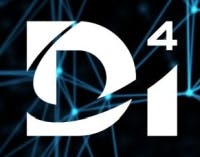DiiA announces D4i extension to DALI for intra-luminaire smart SSL interface
Smart and connected luminaire architectures will benefit from a standardized version of DALI deployed internally between LED drivers and connectivity/sensor modules, and such a modular architecture offers flexibility in network options.
Having taken the reins of DALI (digital addressable lighting interface) two years back, the DiiA (Digital Illumination Interface Alliance) has continued to expand the capabilities of the interconnect and thereby also expanding the ways it can be deployed. The organization has just announced the D4i program that is focused on intra-luminaire usage of DALI-2 technology to connect LED drivers and connectivity/sensor modules in a standardized way. Ultimately, the modular approach with bidirectional DALI-2 will enable more flexible smart and connected solid-state lighting (SSL) products.
The original DALI was almost exclusively used as a control network for lighting products. It included both the definition of a bidirectional bus and a command structure with scene capabilities designed to simplify control of luminaires. We have written about a number of smart-lighting projects that utilized DALI to connect and control luminaires such as in a Norwegian school.
The DiiA, a global consortium of lighting companies, moved to enhance DALI two years back to add features that would truly harness the bidirectional capability of the interface and support full Internet of Things (IoT)-envisioned applications such as optimal office space utilization. The new features were standardized in the DALI-2 specification. DALI-2 added the ability for a device such as a central management system (CMS) or a controller in a luminaire to read data from sensors or control panels.
Subsequently, the DiiA enhanced DALI-2 in a way that enables the interface to be used as an intra-luminaire bus. These D4i enhancements centered on the ability of a D4i-compatible LED driver to concurrently deliver low levels of operating power to sensor and/or connectivity nodes while the interface carried bidirectional data — using just two wires.
Later this year, the DiiA will launch a D4i certification program. The organization already operates a DALI-2 certification program assuring interoperability of products from different manufacturers. And the D4i program will bring that assurance to intra-luminaire implementations in September. The DiiA has revealed the D4i logo that will be used to mark certified products including drivers, sensors, connectivity modules, and more.
Meanwhile, the DiiA is also working with the Zhaga Consortium to standardize a mechanical and electrical socket that would enable a D4i-based module to be connected to a luminaire. Such a modular approach would allow a lighting manufacturer to install smart-lighting components and IoT functionality when a luminaire is manufactured or ship products with an unpopulated connector that would enable a connected-lighting retrofit in the field. Zhaga has already published its Book 18 specification for outdoor luminaires that use intra-luminaire DALI-2. And the organization is working on Book 20 for indoor luminaires. The modular approach will also allow lighting owners — say, a municipality in the case of a street light, or a building owner in the case of an indoor luminaire — to update SSL products as new sensing technologies or network standards emerge.

Maury Wright | Editor in Chief
Maury Wright is an electronics engineer turned technology journalist, who has focused specifically on the LED & Lighting industry for the past decade. Wright first wrote for LEDs Magazine as a contractor in 2010, and took over as Editor-in-Chief in 2012. He has broad experience in technology areas ranging from microprocessors to digital media to wireless networks that he gained over 30 years in the trade press. Wright has experience running global editorial operations, such as during his tenure as worldwide editorial director of EDN Magazine, and has been instrumental in launching publication websites going back to the earliest days of the Internet. Wright has won numerous industry awards, including multiple ASBPE national awards for B2B journalism excellence, and has received finalist recognition for LEDs Magazine in the FOLIO Eddie Awards. He received a BS in electrical engineering from Auburn University.





